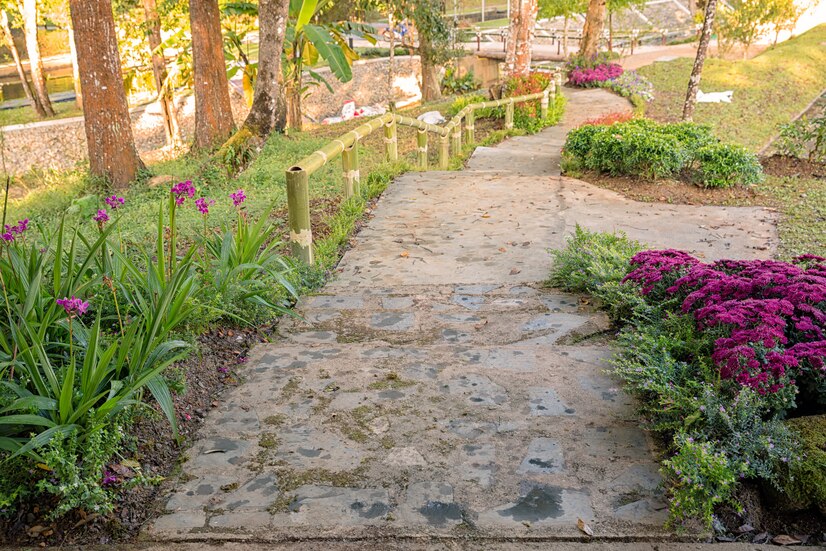Landscaping is essential to creating a beautiful garden. Landscaping involves adding visual appeal and increasing outdoor living space through plants, furniture and decorations in your outdoor area. Here are some essential landscaping tips for an aesthetic garden: plan and measure your space before selecting plants and decorations to fill it; secondly use appropriate soil and fertilizers that support healthy plant growth; finally add accent pieces like fountains for visual interest – these tips should ensure your garden stands out among its peers.
1) Have A Plan

Plan Before Starting A plan is key when it comes to landscaping; this will allow you to accurately establish the size and shape of your garden, choose which plants and decorations to include and stick within budget. Start by measuring and sketching a basic plan of your garden space. From here you can add elements like pathways, structures, plants or even add lighting as per the available sunlight, water and soil conditions in your garden space as this may influence which types of plants grow best there.
2) Include Structures

Structures such as walls, fences and arbors can help your garden define itself visually by providing definition to its space and creating visual interest. Walls can also help separate different sections into your garden with individual styles and functions – for instance creating seating areas to enjoy with family and friends or vegetable gardens for growing produce of your own.
3) Plan For Trees

Trees add beauty and structure to any garden. When planning for trees, take into account how tall they will grow as well as the type of soil and climate your tree requires.
4) Add “Rooms”

Add Rooms mes Dividing up your garden by creating different “rooms” can add interest and expand space. Create areas for entertainment, relaxing or growing plants in designated spots. Consider including seating areas with outdoor furniture or vegetable gardens as additional focal points. Adding walls and fencing may help divide up sections more clearly too!
5) Build Paths

Paths are an integral component of any landscaping project. They add structure and help divide up your garden into sections. Consider using different materials such as gravel, stone or brick when creating paths in your garden for an individualized aesthetic and experience.
6) Include Some Curves

Incorporating curves into your garden can add visual interest and can make the space feel more inviting. Curves can soften edges on paths and walls for a more natural aesthetic; additionally curved pathways help guide the eye around and make the garden appear larger.
7) Add Gates And Arbors

Arbors and gates are essential parts of any landscaping project. Gates offer security while helping create more privacy – consider adding one at the entrance to your garden or along pathways so as to define this space further.
8) Lighting

Lighting is an integral element of landscaping, as it not only enhances its beauty but also offers safety and security for a garden. Low-voltage lighting is energy-efficient, simple to install, and available in numerous styles and designs that highlight focal points within a space.
9) Watering

Proper watering is key to plant health and growth, with deep but infrequent irrigation the most effective approach. Here are some tips for watering your garden: Water deeply but infrequently: Deep irrigation fosters deeper root development that makes plants more drought resistant – once or twice every week is preferable than daily shallow hydration!
10) Pruning
Also Refer:- 10 Essential Things You Need For Your Garden
Pruning is an essential component of keeping healthy plants, while shaping them to your garden design. Here are some tips for pruning in your garden: Use appropriate tools: Sharp and clean pruning shears, loppers or saws will create clean cuts without risk of plant damage and reduce risks of future cuttings. Know when and why to prune: Pruning needs differ for different plants at various points throughout the year.


